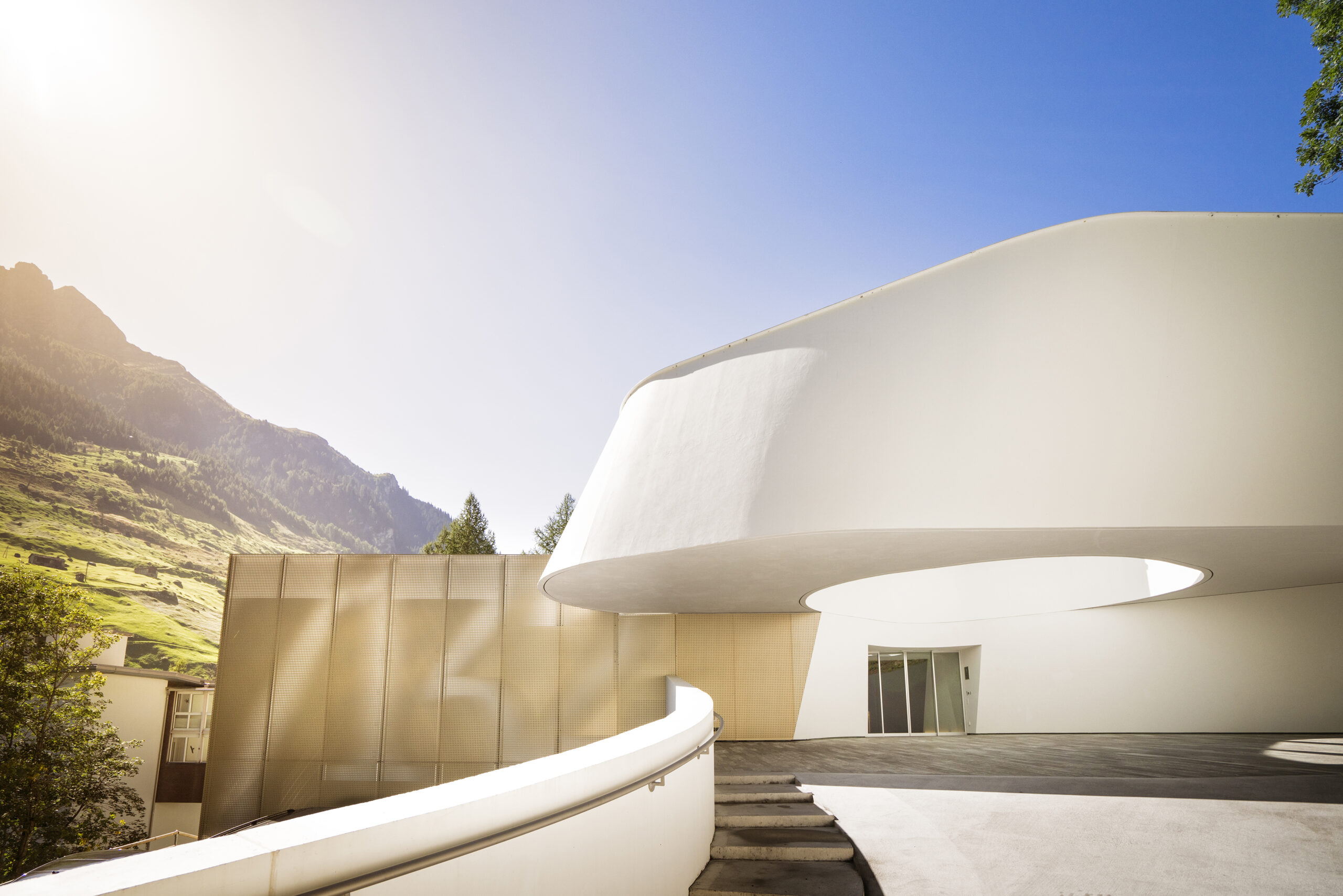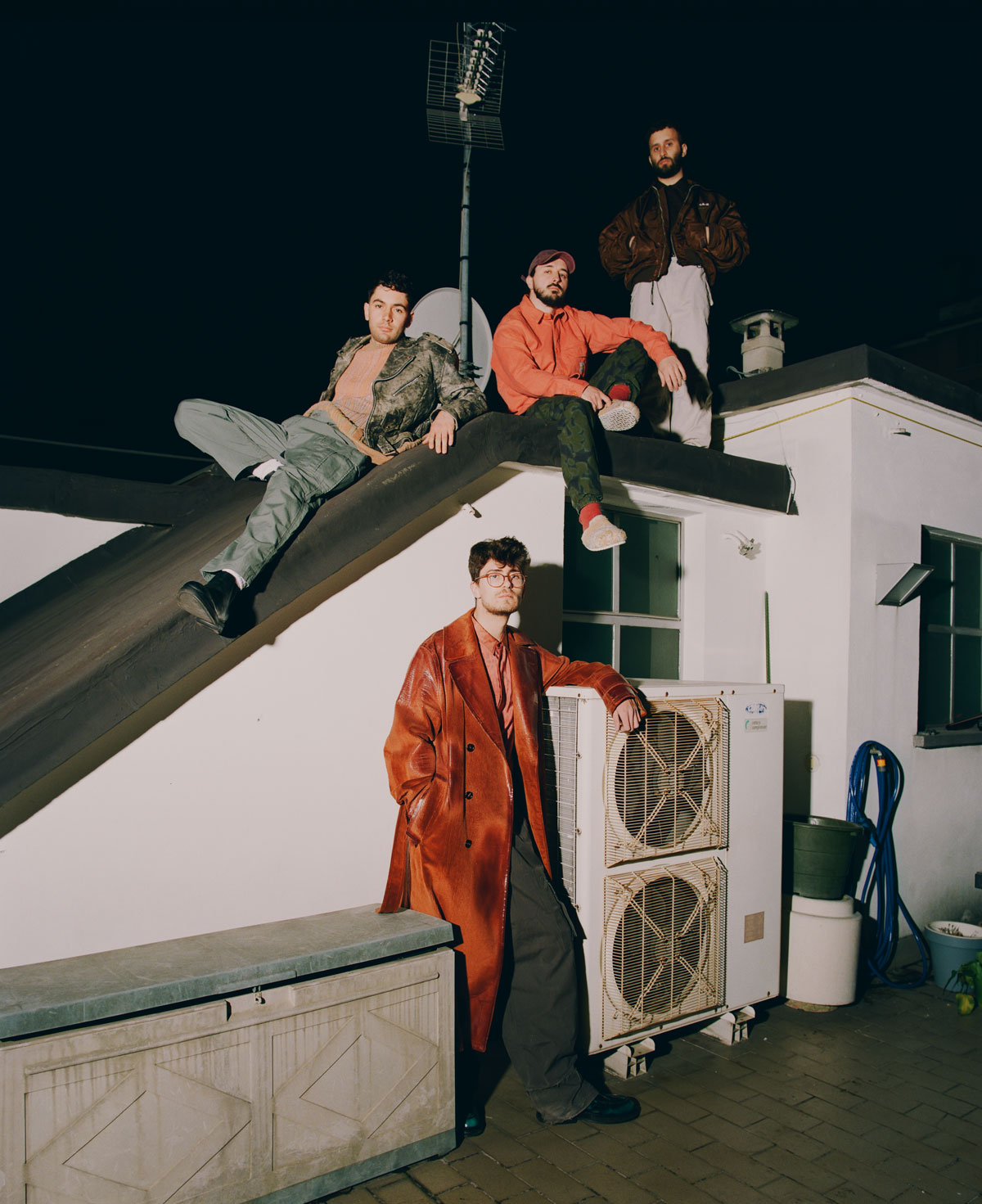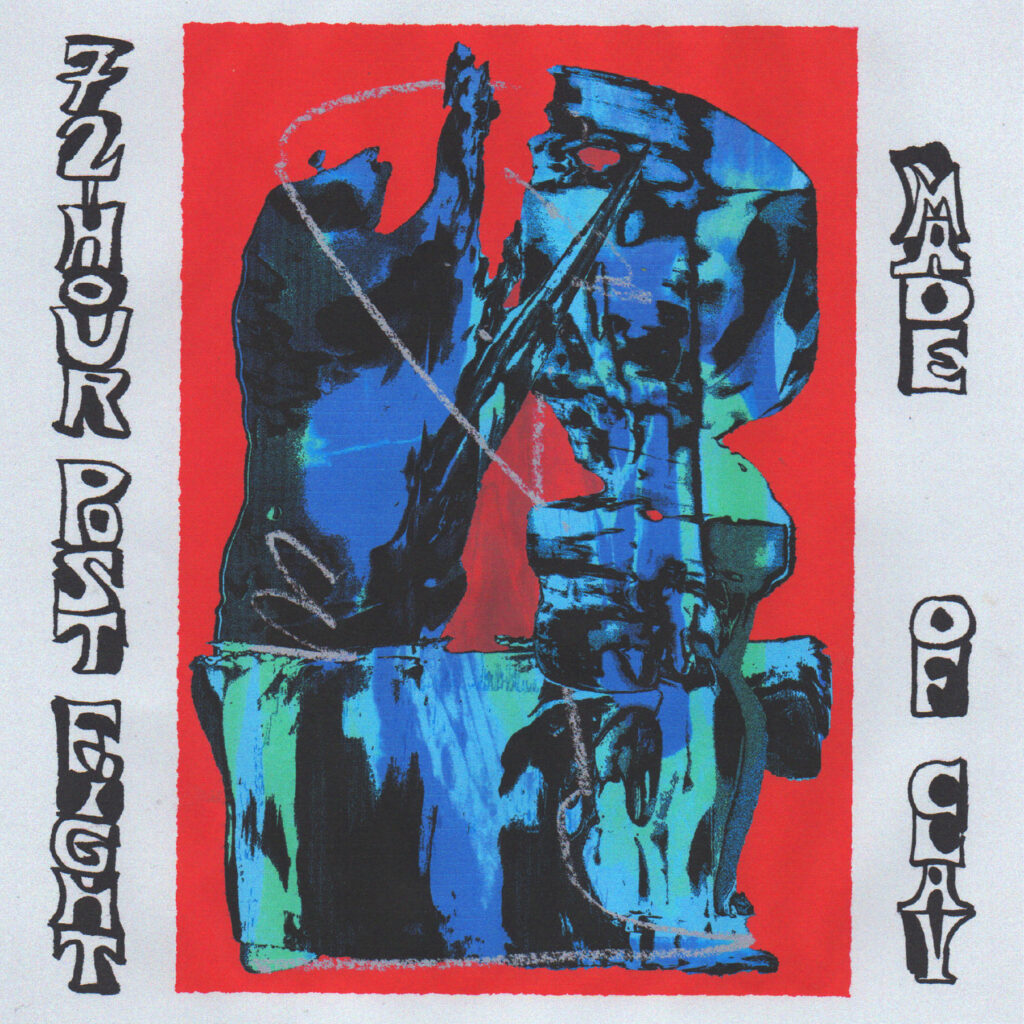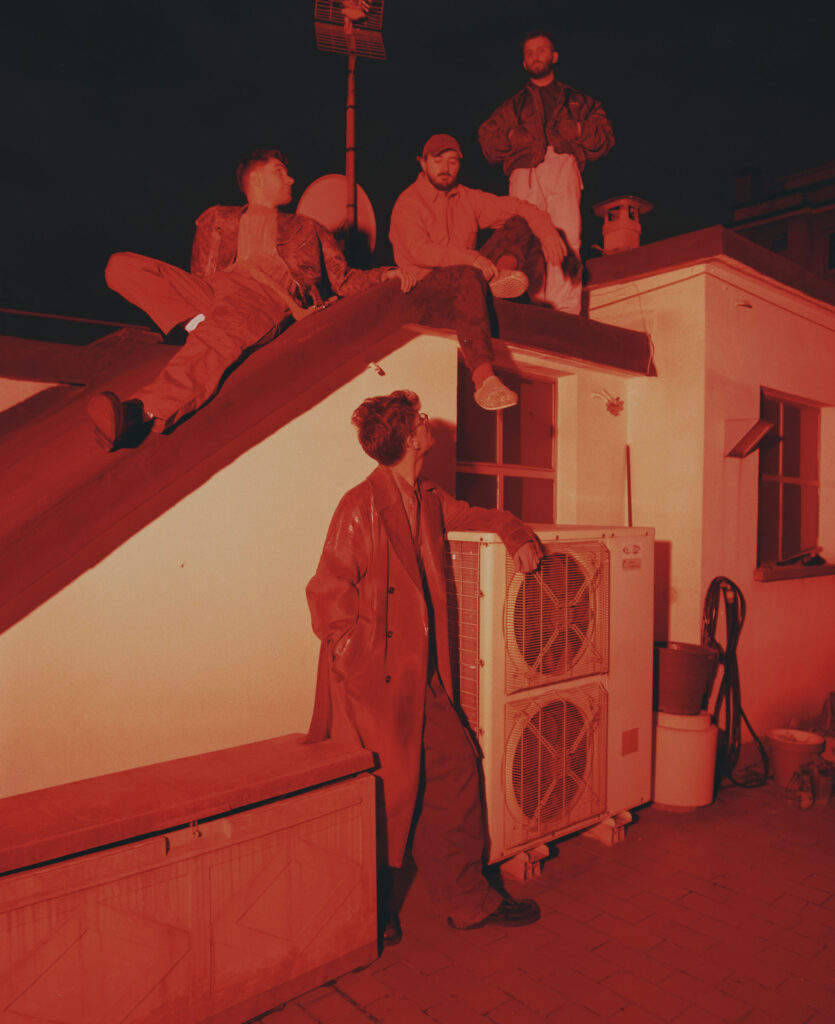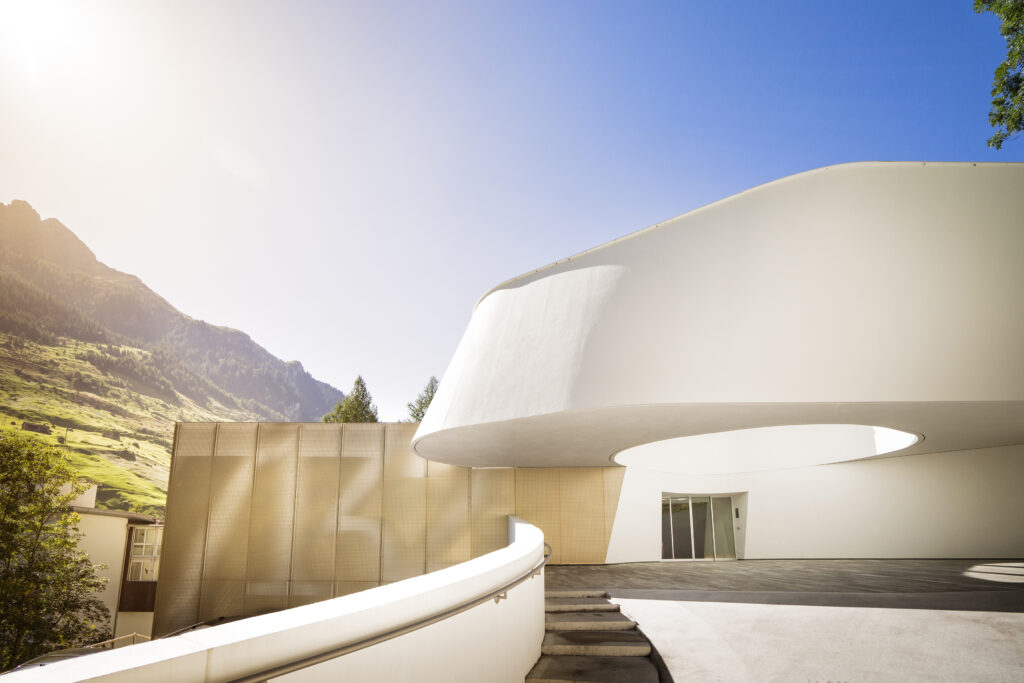
A haven of sojourn
The mountainous village of Vals is blessed by the grace of natural wonders. Rising above sea level in the Canton of Grisons, the Swiss idyllic refuge is home to thermal waters dubbed healing hot springs, their history dating back to the 17th century. Here once lay a sanatorium transformed into a spa hotel in 1964, brought about by the physicians marveling at the curing properties of the springs in the 19th century.
The entrance of the spa hotel ushered in a shift from medical tourism to leisure travel within the neighborhood, all the while retaining the suggestion of a place for alternative healing methods. In 1983, the municipality of Vals reigned over the hotel compound and tapped architect Peter Zumthor, a Grisons native, to architect a new structure to house the thermal baths. The mineralized water of the St. Peter spring had been luring in bathers for more than a century, but Zumthor’s architectural masterpiece for the thermal water’s new home further ushered the territory as a sought-after getaway.
He built a monolithic building made of raw concrete and 60,000 slabs of Vals quartzite, a nod to the archaic beauty of the Vals Valley, and divided the baths into six pools, spanning between 14°C and 42°C pools. Here, the stone architecture and the lush natural land enclosing it form a visual and spiritual harmony. From then on, the architectural community of Vals grew, forming an ensemble of sought-after hospitality and structures backed by the minds and craftsmanship of some of the most revered architects today.

Two years after the opening of Zumthor’s thermal baths in 1996, his masterpiece and the hot springs were honored a status of protected heritage. Yet as years went by, the surging demands of more sophisticated travel and tourism urged the community of Vals to burst forth from its cocoon. Avant-garde buildings began to appear, crafted under the hands of celebrated architects, namely Tadao Ando, Kengo Kuma, and Thom Mayne. Their presence has pronounced Vals as a haven of sojourn that welcomes guests to dip their toes in its remedial mineral springs and luxuriate in one of the world-class accommodations surrounded by the meandering hills, fragrant fields, lengthy hiking trails, and snow-capped ski slopes.
7132 House of Architects suits the name it was given. Tadao Ando and Kengo Kuma bring in the influences of their Japanese roots as they both steep the rooms they designed in the design ethos and lifestyle of their homeland. Ando pays homage to the subtle aesthetics of Japan’s tea houses when designing his 18 rooms and bathes each space with a transition between wooden panels and slabs. His balcony windows offer unobstructed views of the alpine scenery from the mountainside across the room, and his minimal use of furniture, other than a bed taking up most of the space and a wooden bedside table, distills any kind of clutter and distraction.
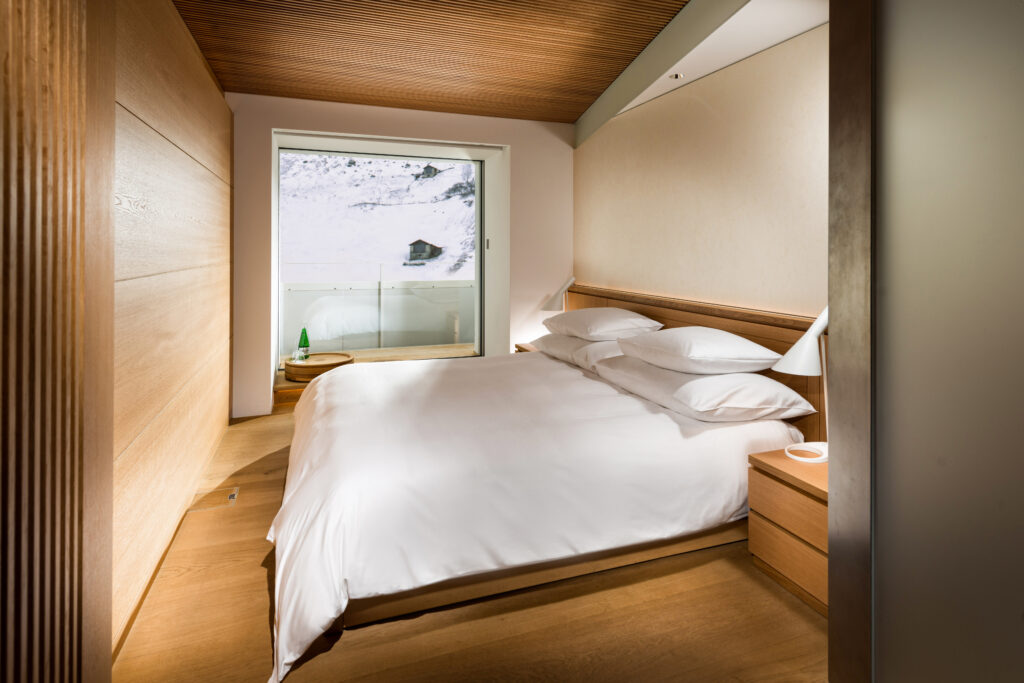
Similar to his compatriot, Kuma employs the tranquil aura of wood to envelope his 23 rooms in a sensation of cozy oakwood cocoons. He layers the modern Swiss oak panels, one slightly on top of the other, until it forms what may resemble dragon scales that make up the walls and ceilings. Continuity threads Kuma’s design. He places a lengthy slab of wood beside the bed which extends to the bathroom and where the basin and faucet are set upon. Here, openness follows as Kuma veers off from closing up the space and opts for an open floor-level shower with clear glass casing and a base of local granite. Showering means the guest affords a view of the bed and the abundant grove peering through generous windows.
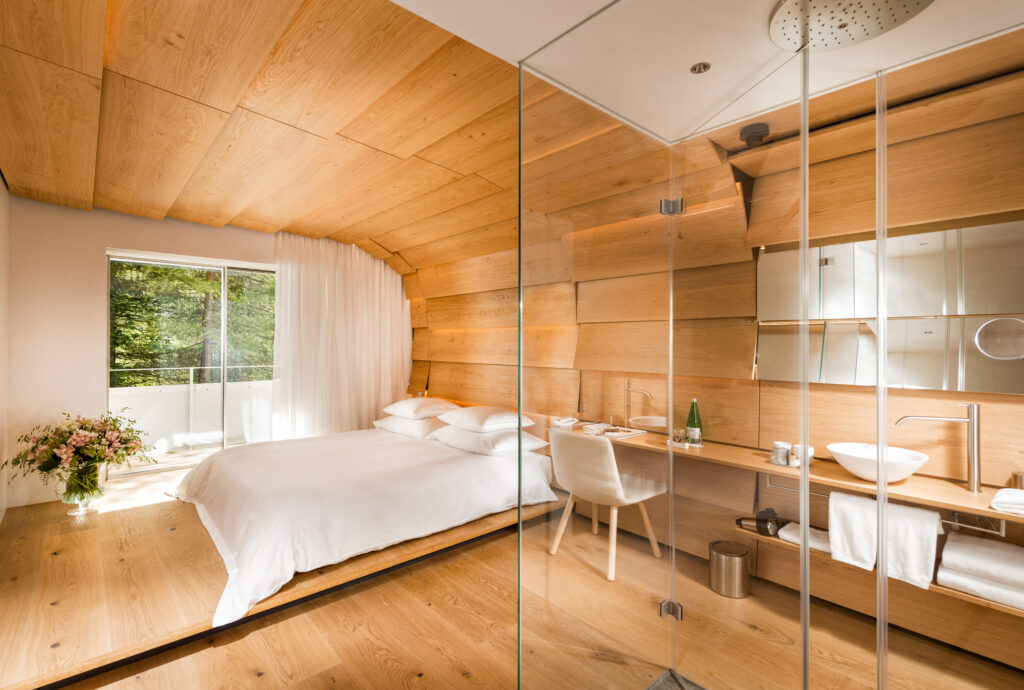
When Thom Mayne’s design emerges, a sudden shift takes place. The architect, who designed 22 rooms, turns to wood for some of the spaces and black stone for the rest. He plays with the two materials, often letting the other win while ensuring they complement each other. In his wood-winning rooms, a sculptural free-standing shower stall stands at the center of the space, an attempt by Mayne to immerse the guests in a three-dimensional experience of space. Its lifesize, stone-like architecture is corralled with a luminous, milky film to enable the guest to see the outside from the inside. Stepping into Mayne’s Stone rooms, Vals quartzite creates a cinematic ambiance, occasionally interfered with by the warm glow of light concealed behind the walls and the lemon-yellow enclosure of the shower stall.

From thermal baths to hotel rooms, Peter Zumthor exhibits a sensuous journey physically and emotionally. His ten rooms are distinctive from his collaborators as he infused each space in stucco lustro, a plastering technique from the Italian Renaissance that produces light-reflective gloss and likens to the surface of marble. He selects a spectrum of zesty and introspective hues, swinging from lush red and vibrant yellow to illusory black, and melds everything with handpainted curtains made of Habotai silk. Luxury at work effortlessly infiltrates the rooms, coupled with the chandelier wrapped in what may be globe-carved stones.

7132 House of Architects is an idle passageway to the entire 7132 dreamscapes. Before reaching 7132 Thermal Baths, guests may pad through 7132 Hotel 5S whose three penthouse suits on its top floor were also designed by Kengo Kuma. Inside the hotel, rare natural materials like wood dominate the landscape, forming a harmonious balance with the scenic grassland sitting outside the property. In another path, guests are led to the chalet of 7132 Glenner, an adjoining accommodation, which sits at the center of the village. Its traditional Swiss design blends well with the modern interior and rooms, an understated guest house brushing against architectural giants within the complex.

It is no longer a myth how Vals gradually received its namesake as a coveted destination and a welcoming respite in the cradle of Swiss nature, from the hotel rooms designed by revered architects to the believed curing property of the hot springs. Even if the guests move away, the lasting impressions 7132 has left them pulls them back in, inviting them to once again return and soak in the wonders of nature and luxury.
